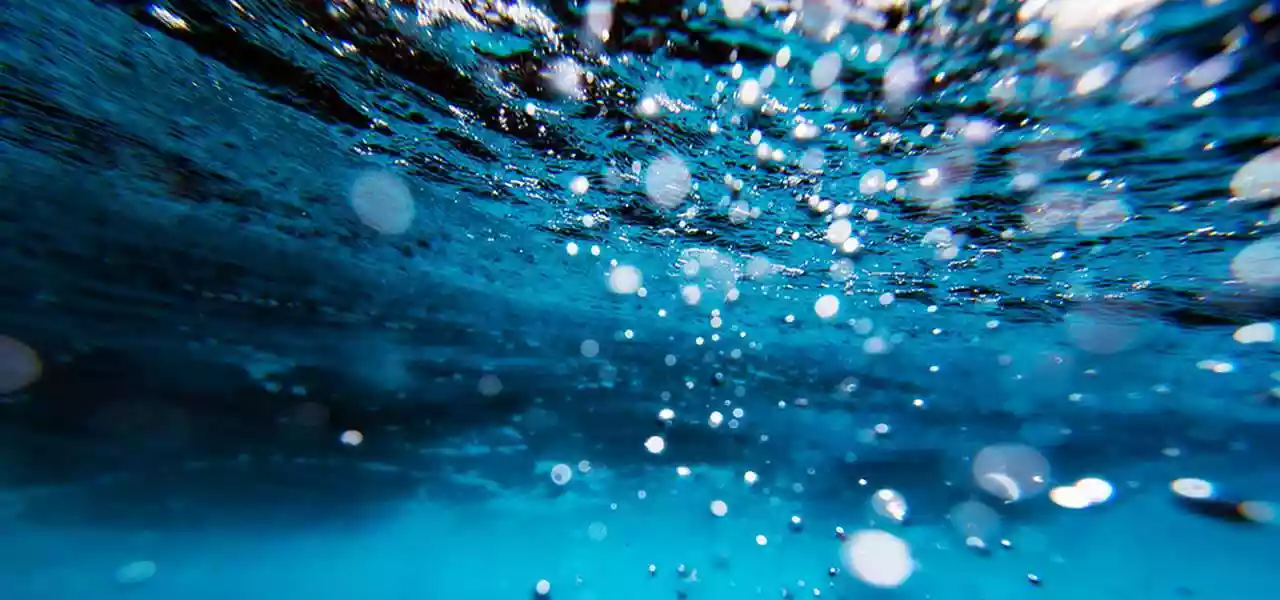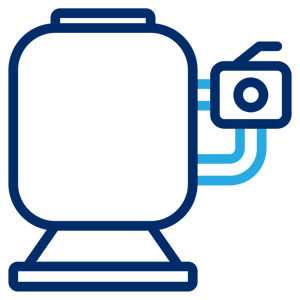FREE Standard Shipping On All Orders $100 or More!*

Why Are There Bubbles in Your Pool?
Many pool owners experience a shared problem that arises at the beginning of every pool season — air bubbles coming out of their pool's return jets. In conjunction with that issue, another concern that develops is pump priming malfunctions. Thankfully, there is just one cause for both of these dilemmas: air in the pool pump.
Your pool pump has two main sides, the suction side and the pressure side. As the name suggests, the suction side sucks the pool water through the pipes, then sends it into the pump impeller. Once the water gets past the impeller, it flows to the pressure side, where it's then sent back out into your pool. Because the suction side draws water in, rather than pushing it out, if there is air in your pool pump, it's coming from the suction side.
How is the Air Getting in the Pump?
To find out why air is in the pump, inspect the pool skimmer, the pipes and valves, and finally the pump itself. There are multiple parts that make up the suction side, so it may take a bit of time to thoroughly examine each part. Thankfully, resolving suction side issues is relatively simple. Let's begin!
1. Low Water Level
The water level of your pool should always be at least halfway up the opening of the skimmer. If the level drops too low, the skimmer will suck in air along with the water. Resolve this by simply adding more water to your pool.
2. Skimmer Basket
Skimmer weirs can stick if the skimmer walls bow inward. If the weir gets stuck in the up position, blocking water flow, remove it and trim a bit off on each side. You can also replace it with a more narrow spring loaded weir. Avoid toys or rafts becoming stuck in the skimmer, by clearing the pool of all gear after swimming.

3. Pipes and Valves
Cracked pipes in the suction side of your pump can cause a high influx of air in the pump. Check for any damaged pipes by pouring water over the pipes while the pump is turned off. If bubbles appear on the pipes, that indicates a crack and the pipe will need to be replaced.
Valves turned in the wrong direction will restrict water flow to the incoming lines and force the pump to go into overdrive. This results in higher vacuum pressure and draws in air around the incoming valves. Make sure all valves are open, and not closing off any lines.
4. Strainer Basket Plug
The plug on the strainer basket acts as an air-seal, so any damage will allow air in the pump and cause bubbles in your pool. Simply inspect the strainer basket plug and replace the o-ring if it is damaged or worn.
5. Loose Pump Lid
The pump lid also acts as an air-seal for the pump system. Check the pump for any worn o-rings or cracks in the lid. Patching a crack is a solution, but only a temporary one. The crack will always come back, so it is best to replace the entire lid.
6. Loose Drain Plugs
Loose drain plugs can result in air in the pump. If your pump drain plug uses an O-ring, and many do nowadays, make sure it's still intact; they only seem to last 3-5 years before dry-rotting. If your pump drain plug does not use an O-ring, use Teflon tape on the threads and tighten with pliers. For best results, remove previous layers of Teflon tape, and wrap it three times (in a clockwise direction as the threads face you), with new Teflon tape each spring, or whenever the pump drain plugs are removed.

7. Filter Was Recently Cleaned
When the filter tank is opened and cleaned, it can take a while before all the air is pushed through the filter and sent to the pool returns. Avoid this by always opening the air bleeder on top of the filter tank when restarting the pump. Let the air bleed out until a steady stream of water is spraying. It's normal for a few handfuls of air to remain in the filter tank, so don't be surprised if there seems to always be just a little more air in the tank.
Air bubbles in your pool can leave pool owners scratching their heads, wondering what the cause is. Thankfully, the cause is usually localized to one area, the pool pump. Diagnosing why your pool pump is sucking in air can be time consuming, but with a little detective work, you'll find the problem in no time. While a damaged pool pump might seem catastrophic, it is usually a quick and easy fix. Follow these steps to diagnose and repair your pump, and say goodbye to bubbles!